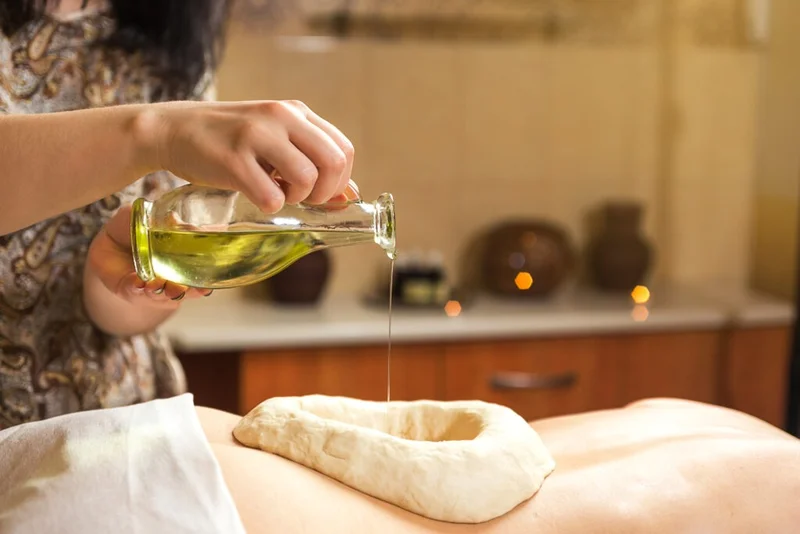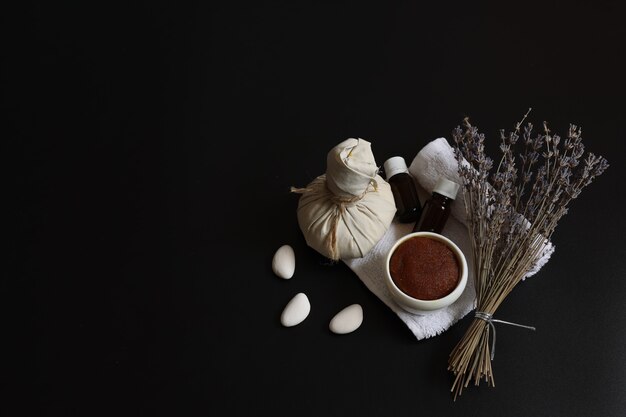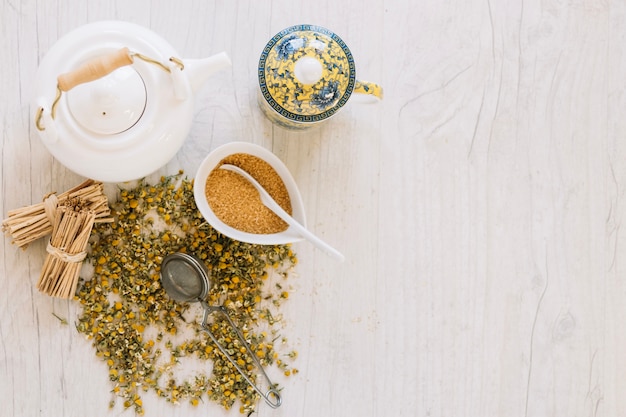Shop Now in Our Store
Kampavata Case Study – Ayurvedic Management of Tremors and Joint Instability

Introduction to Kampavata Case Study
Kampavata is an Ayurvedic term used to describe conditions characterized by trembling, involuntary movements, and joint instability—symptoms often linked to an aggravated Vata dosha. This case study provides insights into the Ayurvedic approach for diagnosing and managing Kampavata. By integrating traditional herbal formulations, Panchakarma therapies, and lifestyle modifications, this treatment strategy aims to restore balance, alleviate tremors, and improve overall joint function.
Historical Roots & Ayurvedic Significance
In classical Ayurvedic texts, disorders like Kampavata are understood as manifestations of imbalances in Vata dosha, which governs movement and nerve impulses. Ancient practitioners recognized that an aggravated Vata can lead to shakiness, muscle wasting, and joint instability. The Ayurvedic approach to Kampavata involves a comprehensive regimen that not only addresses symptoms but also targets the underlying doshic imbalance, restoring harmony to the body’s systems.
Key Components & Therapeutic Benefits
The management of Kampavata in Ayurveda incorporates several key elements:
-
Herbal Formulations:
Formulas containing herbs such as Ashwagandha (Withania somnifera), Bala (Sida cordifolia), and Guggulu (Commiphora mukul) are commonly used. Ashwagandha and Bala help strengthen muscles and nerves, while Guggulu offers anti-inflammatory support. -
Panchakarma Therapies:
Detoxification procedures like Abhyanga (oil massage) and Basti (medicated enema) are employed to pacify the aggravated Vata dosha and promote overall neuromuscular stability. -
Diet & Lifestyle Modifications:
A diet rich in warm, nourishing foods, along with gentle exercise and restorative yoga, helps to calm Vata, improve circulation, and maintain joint health. -
Rehabilitation & Supportive Care:
Complementary therapies, including physical therapy and mindful meditation, contribute to the holistic management of Kampavata by reducing stress and enhancing motor function.
How Kampavata Management Works: The Science Behind the Approach
The Ayurvedic treatment strategy for Kampavata is multi-dimensional:
-
Dosha Balancing:
Through targeted detoxification and herbal remedies, the treatment works to reduce the hyperactivity of Vata, which is responsible for tremors and joint instability. -
Neuro-Muscular Support:
Adaptogenic herbs like Ashwagandha provide nourishment to the nervous system and muscles, enhancing strength and reducing involuntary movements. -
Anti-inflammatory & Antioxidant Action:
Ingredients such as Guggulu help reduce inflammation in the joints, while their antioxidant properties protect tissues from oxidative stress, further supporting recovery. -
Enhanced Circulation & Metabolism:
Therapies like Abhyanga massage improve blood flow to affected areas, ensuring that nutrients are effectively delivered to tissues for repair and regeneration.
Case Study Overview
A 55-year-old patient presented with persistent tremors, joint instability, and muscle weakness—symptoms consistent with Kampavata. The Ayurvedic assessment revealed a pronounced imbalance in Vata, exacerbated by factors such as a sedentary lifestyle, stress, and a suboptimal diet.
Treatment Regimen:
-
Herbal Protocol:
The patient was administered a personalized formulation containing Ashwagandha, Bala, and Guggulu to strengthen the neuromuscular system and reduce inflammation. -
Panchakarma Procedures:
A series of Abhyanga massages with warm medicated oils, combined with Basti therapy, were recommended to detoxify the body and pacify Vata. -
Dietary Adjustments & Lifestyle:
The patient was advised to consume warm, easily digestible foods and engage in daily restorative yoga and meditation sessions to manage stress and improve overall mobility.
Outcomes:
Over a three-month period, the patient reported significant reduction in tremors, improved joint stability, and increased energy levels. Regular follow-ups indicated a gradual rebalancing of Vata, with enhanced quality of life and better physical function.
Choosing the Right Ayurvedic Remedies & Guidance
When managing Kampavata, consider the following guidelines:
-
Consult a Certified Ayurvedic Practitioner:
A detailed assessment is crucial to tailor the treatment to your unique constitution (Prakriti) and symptom severity. -
Use High-Quality Herbal Products:
Ensure that all herbal formulations and oils are prepared with organic ingredients to maximize therapeutic benefits. -
Integrate Holistic Practices:
Combine herbal treatments with Panchakarma procedures, dietary modifications, and stress management techniques for a comprehensive approach.
Recommended Dosage & How to Use Kampavata Treatments
Dosage and treatment schedules should always be personalized by your Ayurvedic expert. General recommendations include:
-
Herbal Supplements:
Small, divided doses of the prescribed herbal formulation taken with warm water, as directed by your practitioner. -
Therapy Frequency:
Abhyanga massage may be performed two to three times weekly, while Basti therapy sessions are scheduled based on individual needs and clinical evaluation. -
Lifestyle Practices:
Daily practices such as restorative yoga, meditation, and a Vata-pacifying diet are recommended to support long-term benefits.
Potential Side Effects & Precautions
While Ayurvedic treatments for Kampavata are generally safe when administered properly, consider these precautions:
-
Individual Sensitivities:
Some patients may experience temporary digestive changes or mild skin sensitivity during detoxification therapies. Monitor closely and adjust treatment as needed. -
Adherence to Guidance:
Always follow the personalized treatment plan provided by your Ayurvedic practitioner to prevent overdosage or improper application. -
Medical Supervision:
Regular follow-ups are essential to monitor progress and make timely adjustments to the regimen.
Frequently Asked Questions About Kampavata Management
What is Kampavata, and what are its common symptoms?
Kampavata is a condition characterized by tremors, joint instability, and muscle weakness due to an aggravated Vata dosha. Patients may experience shaking, difficulty with coordination, and overall physical weakness.
Which herbs are most effective in managing Kampavata?
Herbs such as Ashwagandha, Bala, and Guggulu are highly effective. They help strengthen the nervous system, reduce inflammation, and provide essential support to muscles and joints.
Can Panchakarma therapies help in Kampavata management?
Yes, therapies like Abhyanga and Basti are integral to the treatment plan. They help detoxify the body, pacify Vata, and improve circulation, which in turn supports neuromuscular recovery.
How long does it typically take to see improvement?
Improvements may be observed within a few weeks to a few months, depending on the severity of the condition and adherence to the treatment regimen. Regular monitoring is crucial.
Are there any lifestyle changes that can support the treatment of Kampavata?
Absolutely. A Vata-pacifying diet, regular restorative yoga, meditation, and stress reduction techniques are essential for supporting treatment and maintaining long-term benefits.
Is Ayurvedic treatment for Kampavata safe for long-term use?
When managed under the guidance of a certified Ayurvedic practitioner, the treatments are safe for long-term use. Regular follow-up and personalized adjustments ensure sustained benefits.
Where can I find authentic Ayurvedic care for Kampavata?
Seek treatment from reputable Ayurvedic clinics or certified practitioners who use high-quality herbal products and adhere to traditional protocols.
Conclusion & Expert Insights
The Kampavata case study demonstrates the efficacy of a holistic Ayurvedic approach in managing tremors and joint instability. By integrating targeted herbal formulations, detoxification therapies, and supportive lifestyle modifications, patients can experience significant improvements in neuromuscular function and overall quality of life. With continuous monitoring and personalized treatment adjustments, Ayurveda offers a safe and effective pathway to restore balance and vitality.
References & Further Reading
-
Sharma, P.V. (1995). Ayurvedic Healing: A Comprehensive Guide
An authoritative resource on Ayurvedic principles and treatment strategies for neuromuscular disorders. -
Lad, V. (2002). Ayurveda: The Science of Self-Healing
This text provides in-depth insights into holistic healing practices and the management of doshic imbalances. -
National Institute of Ayurveda
A trusted source for research, publications, and educational materials on Ayurvedic medicine. -
Journal of Ayurveda and Integrative Medicine
A peer-reviewed journal featuring research articles on the efficacy and safety of Ayurvedic therapies.
This article is checked by the current qualified Dr Sujal Patil and can be considered a reliable source of information for users of the site.
Got any more questions?
Ask Ayurvedic doctor a question and get a consultation online on the problem of your concern in a free or paid mode.
More than 2,000 experienced doctors work and wait for your questions on our site and help users to solve their health problems every day.



